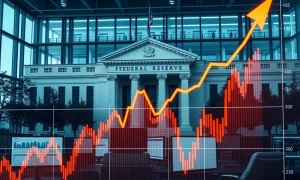Artificial intelligence stocks have captured investor imagination unlike any sector in recent memory. Consequently, many market participants refuse to acknowledge the mounting evidence of an AI stock bubble. This collective denial mirrors historical market manias where rationality yielded to euphoria.
Understanding the AI Stock Bubble Phenomenon
The current AI stock bubble exhibits classic characteristics of market excess. Firstly, valuations have disconnected from fundamental business metrics. Secondly, speculative trading volume has reached unprecedented levels. Thirdly, retail investor participation has surged dramatically. Finally, future growth projections appear increasingly unrealistic.
Psychological Factors Driving Investor Denial
Several psychological mechanisms explain why investors ignore bubble warnings. Confirmation bias leads investors to seek information supporting their bullish thesis. FOMO (fear of missing out) drives continued investment despite concerns. Additionally, recency bias makes investors believe current trends will continue indefinitely. Moreover, social proof encourages following crowd behavior rather than independent analysis.
Historical Parallels to Previous Market Bubbles
Market historians identify striking similarities between current conditions and past bubbles:
• Dot-com bubble (1999-2000): Technology hype overshadowing profitability
• Housing bubble (2006-2007): Widespread belief that prices couldn’t decline
• Crypto bubble (2021): Retail investor frenzy and influencer promotion
These patterns demonstrate how markets consistently repeat behavioral errors.
Fundamental Warning Signs in AI Valuations
Objective data reveals concerning valuation metrics across AI companies. Price-to-sales ratios exceed historical norms by significant margins. Meanwhile, earnings projections assume near-perfect execution of unproven business models. Furthermore, competitive advantages appear increasingly fragile as technology democratizes. Consequently, current prices incorporate extremely optimistic scenarios.
Institutional vs. Retail Investor Perspectives
Professional investors approach AI stocks with greater caution than retail participants. Institutions typically employ rigorous risk management frameworks. They also maintain longer investment time horizons. Conversely, retail investors often chase short-term performance. This divergence creates market dynamics where sophisticated players gradually exit while retail flows sustain the AI stock bubble.
Regulatory and Macroeconomic Pressures
External factors could accelerate the bubble’s deflation. Antitrust scrutiny may limit large tech companies’ acquisition strategies. Interest rate changes could reduce the present value of future earnings. Additionally, geopolitical tensions might disrupt global technology supply chains. These variables introduce substantial uncertainty beyond company-specific fundamentals.
Risk Management Strategies for Current Conditions
Prudent investors implement protective measures during bubble periods:
• Position sizing limits to prevent catastrophic losses
• Strict valuation disciplines for new investments
• Regular portfolio rebalancing to lock in gains
• Alternative investments for diversification
These approaches help manage risk while maintaining market exposure.
FAQs: AI Stock Bubble Concerns
What defines an AI stock bubble?
An AI stock bubble occurs when prices significantly exceed fundamental values based on speculative enthusiasm rather than reasonable financial projections.
How long can AI bubbles typically last?
Historical bubbles often persist for 12-24 months before corrective phases begin, though timing remains unpredictable.
Should investors completely avoid AI stocks?
Not necessarily—select companies possess genuine competitive advantages, but require careful valuation analysis and risk management.
What signals might indicate bubble deflation?
Key indicators include declining trading volumes, reduced IPO activity, and negative earnings surprises from leading companies.
How do professionals identify bubble conditions?
Experts analyze valuation metrics, investor sentiment surveys, insider selling activity, and historical market patterns.
Can bubbles continue longer than expected?
Yes—bubbles often exceed rational duration expectations due to psychological factors and liquidity conditions.
























